The man who made a can of tinned tomato soup one of the most iconic art pieces of the 20th century.
Andy Warhol was, without exception, a leading figure of the emerging 1950’s pop art movement. His films, sculptures and silkscreen prints reflected the post war zeitgeist, a freshly liberated and free-thinking culture that poked fun at the stuffiness of artistic elitism.
His strong use of irony, colour and bold prints propelled his fame throughout and beyond the 1960’s and made Warhol one of the most prominent figures of contemporary art. He was a creative trendsetter, socialite and of course, an iconic glasses wearer.

Andy Warhol regularly wore full-rim clear acetate spectacles with a slight pinkish hue to them | Image credit: Sally Soames
Born in 1928, his birth name, Andrew Warhola derived from his Slovakian parents. He was raised in Pittsburgh, Pennsylvania.
Warhol’s earliest inspirations stemmed from his spate of poor health around the age of 9. He’d become bedbound from the effects of Sydenham Chorea and was confined to staying inside for several months.
Listening to music in his room, he took to drawing and began collecting images of film stars and celebrities. It’s said that this is where he developed his taste for popular culture spending his time listening to radio and hearing promotional adverts.
After graduating from high school, Warhol enrolled at the University of Pittsburgh to study commercial art where he made his first artisitic steps via the student art newspaper. He later began his career in advertising as a magazine illustrator when he moved to New York in 1949.
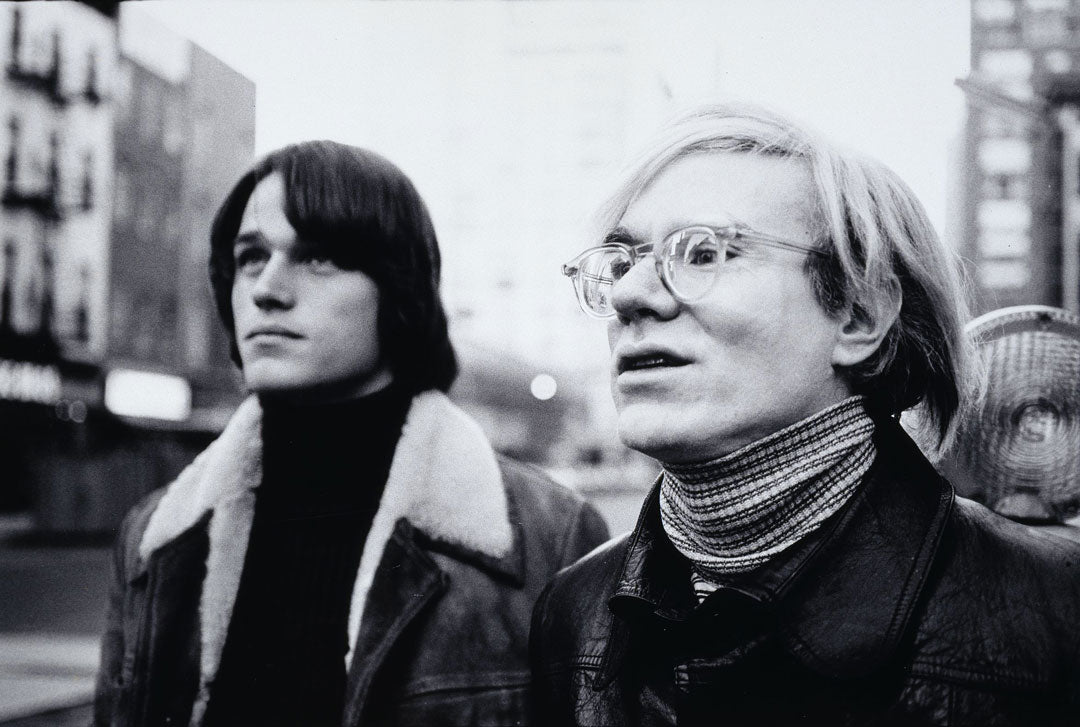
Jed Johnson (left) and Andy Warhol (right) New York | Image credit: National Gallery of Australia
In the 1950’s Warhol had been hired to draw and design shoes for Israel Miller where he became noticed for his unique expression and talent. He had knack for imparting a depth of emotion into each of his shoe-drawings and gradually turned his focus towards to silkscreen printing.
Relishing this new-found process, he developed his own personal style, later being asked to design album covers, adverts and promotional illustrations for the likes of Vogue, The New Yorker and Glamour magazine. This initiated Warhol’s transition from illustrator to artist as he began showcasing his experimental prints in various New York art exhibitions.
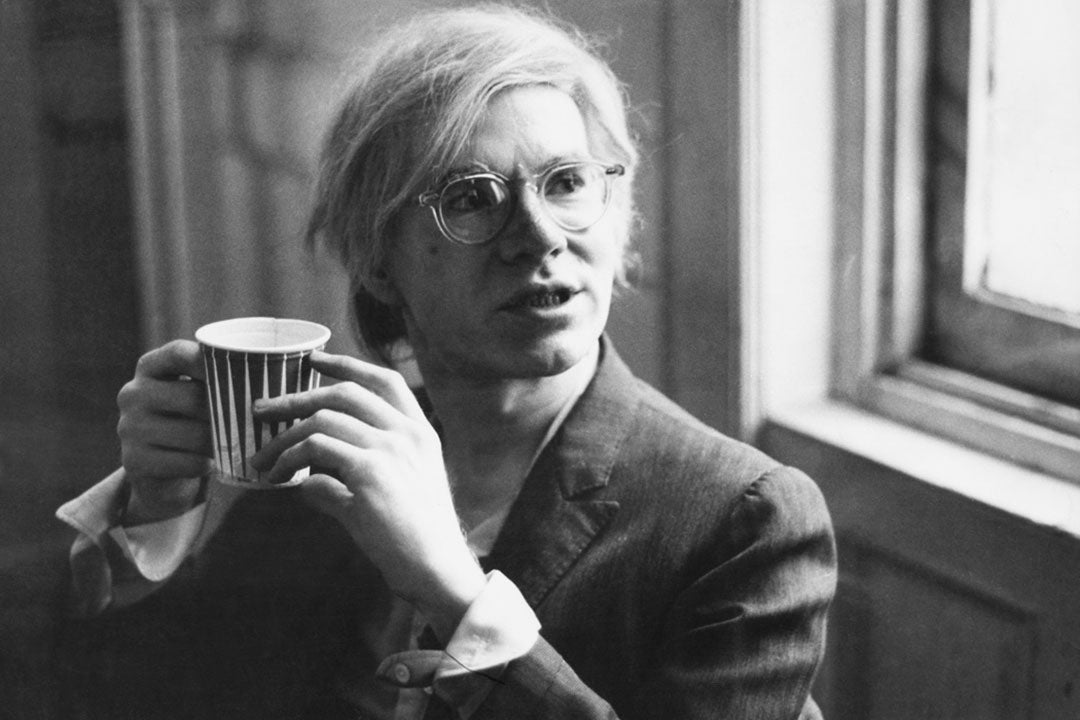
Warhol usually opted for a round shaped glasses frame which suited his narrow face and pale complexion. Notice the metal hinges and rivets which are visible through the acetate.
In the 1960’s Warhol famously began silkscreen printing and painting ubiquitous items and celebrities of American culture. Coca Cola bottles, dollar bills, Elvis Presley, Marilyn Monroe and of course his renowned Campbell’s Soup Cans.
Later, he founded "The Factory," his famous New York studio; the interior of which was lined with silver foil where he attracted a cult following of like-minded artists, celebrities and musicians.
Over the years, The Factory studio moved between several locations, but it was there where he socialised and created and his prominent and revered works.
Bold silkscreen prints. Paintings and sculptures of literal, banal everyday items. He released an incredible 60 films, one of his most famous being the feature length ‘Chelsea Girls’ in collaboration with his peer, Paul Morrissey.

The famous Green Coca Cola bottles, 1962 by Andy Warhol. This oil painting was one of 112 almost identical oil paintings | Image credit: Pinterest
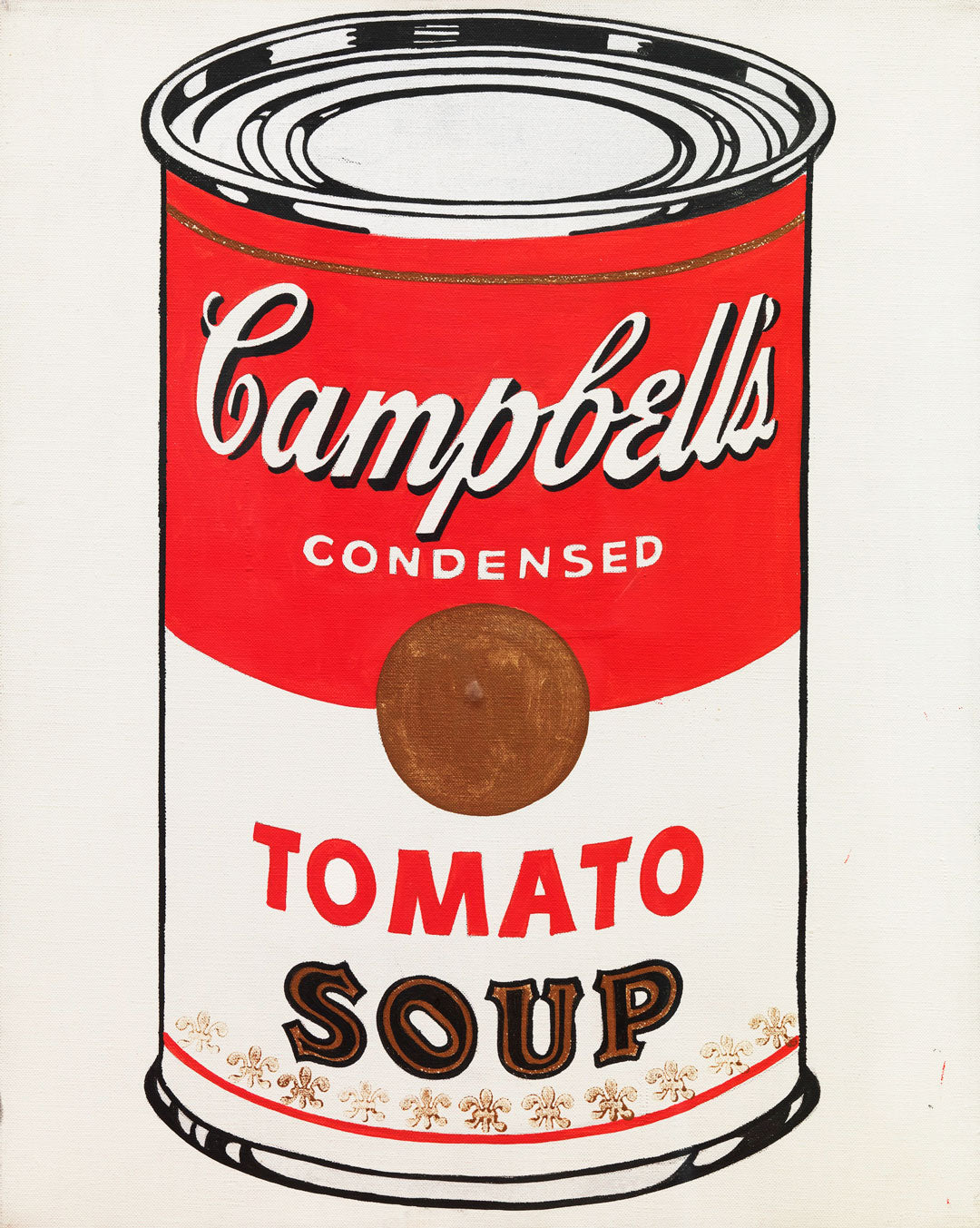
One of Andy Warhol's "32 Campbell's Soup Cans," a range of 32 semi-mechanised screen printed canvases depicting the entire range of Campbell's soup varieties | Image credit: Museum of Modern Art
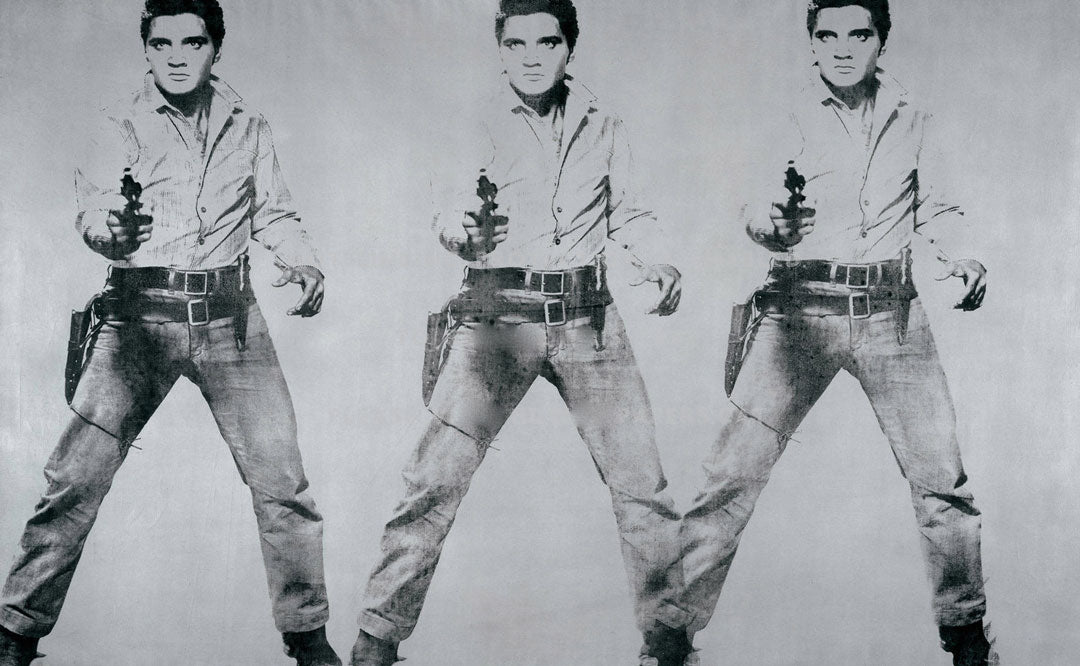
The "Triple Elvis" silkscreen print made by Andy Warhol in 1963. In a New York art auction in 2014, the famous painting sold for £51.9 million | Image credit: Pinterest
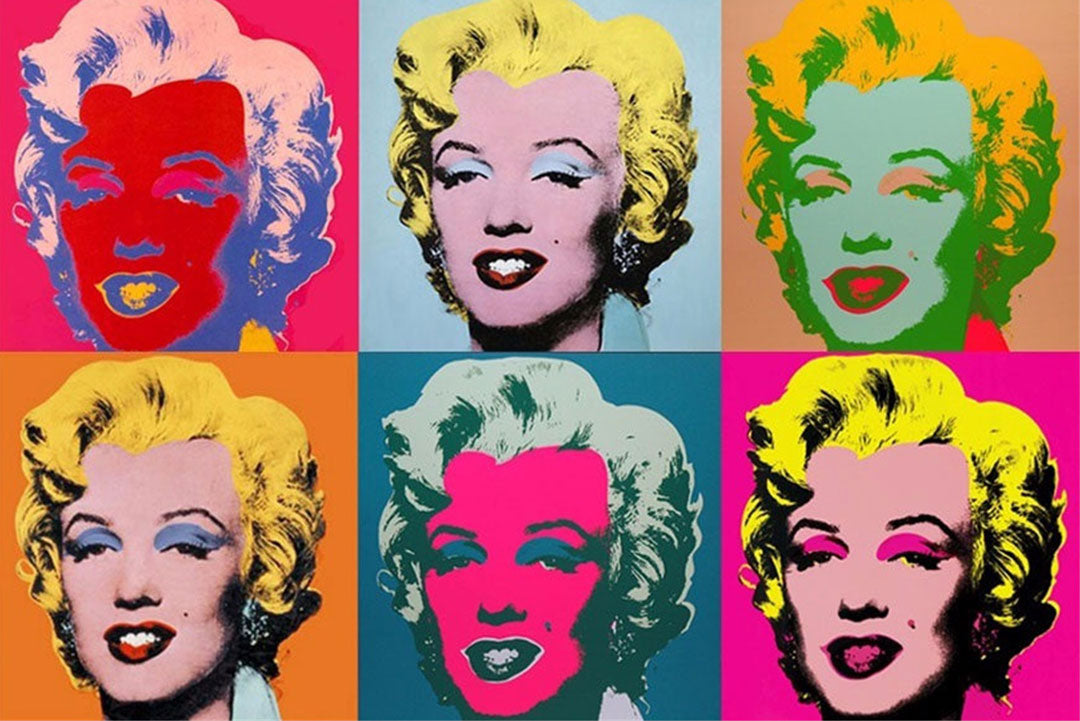
The "Marilyn Diptych" is considered as one of Andy Warhol's most famous works. It was a series of 50 prints which were made in the following weeks after the actresses' death in 1962. Half of the prints were in colour, the other 25 were made in black and white which conveyed the celebrities life before and after her death. | Image credit: Art Cloud

Andy Warhol wearing his round sunglasses frame inside his New York studio "The Factory" where he created the famous "Marilyn Diptych" 50 silkscreen prints | Image credit: AnOther Magazine
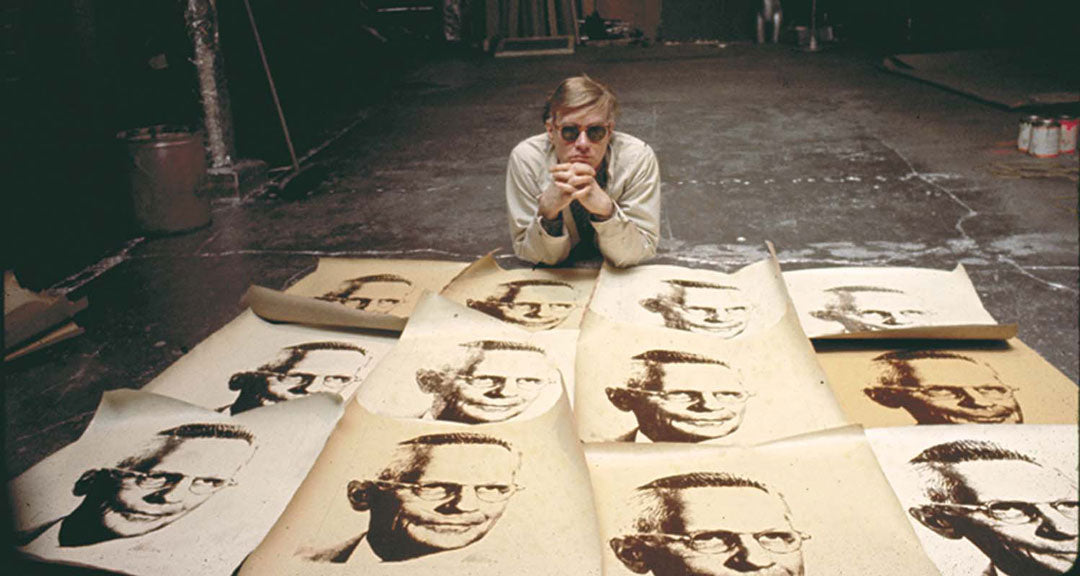
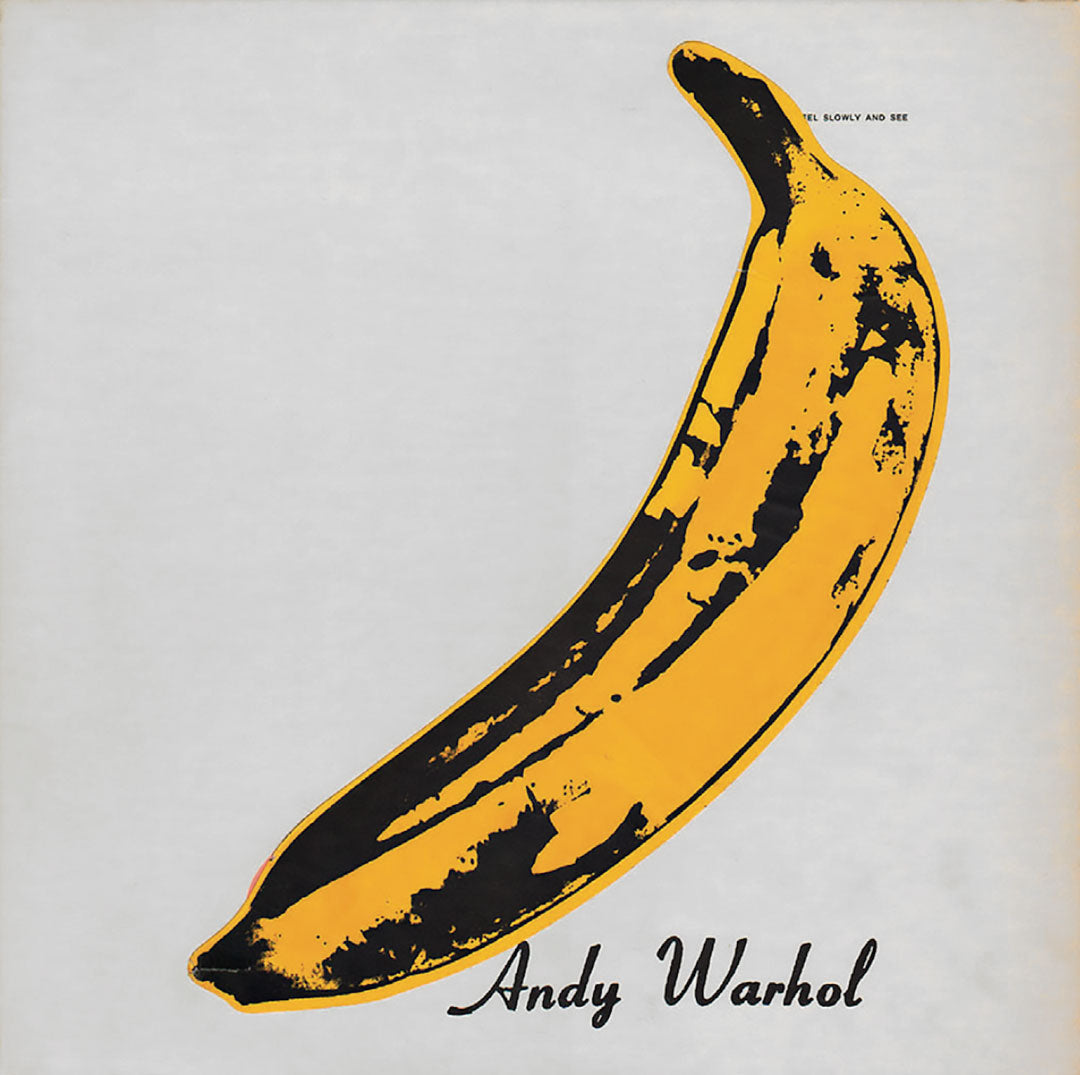
Artwork for "The Velvet Underground & Nico" album cover, designed by Andy Warhol in 1967. Interestingly, Warhol also famously managed and mentored the band as well as designing this iconic fascia. The first editions were specially made so that the banana could actually be peeled back to reveal a pink fleshy interior | Image credit: America Magazine
Warhol’s style, in his art and his appearance was eccentric. Typical of many artists, he confidently embodied his creativity which he expressed via his outlandish hairstyle and choice of glasses.
Many photos show his identifiable peroxide white hair, a trademark he maintained for many years. Sometimes, it’d be combed, swept or even fixed-up as if he’d been electrocuted. In his later life, it transpired he continued this look by wearing a wig.
In contrast, he regularly wore quite dark, inexpressive clothing which accentuated his fair face, brilliant white hair and full-rim eyeglasses.

Andy Warhol’s glasses
Throughout the years, Warhol’s fame, art and socialite parties attracted his fair share of media attention.
In many photographs during his career, his glasses frames varied in colour often being made from an entirely transparent colour of cellulose acetate. He preferred full-rim frames, which of course, were the height of fashion during the 60’s and 70’s.
In colour photographs, you can detect the faint tint of rose-pink in his transparent spectacles. A nod to his creativity, flamboyance and eccentricity.
What brand of glasses did Andy Warhol wear?
Living in the heart of New York, Andy Warhol was at the epicenter of culture, fashion, and innovation, which undeniably influenced his stylistic choices, including his iconic glasses. The brand of glasses he most likely wore was Moscot, a quintessential New York company that has been a fixture in the city since 1915. Known for their quality craftsmanship, timeless designs, and unique appeal, Moscot glasses were the epitome of New York style, making them a fitting choice for Warhol. This renowned artist was not just known for his POP art, but also for his distinctive personal style, and his glasses were a significant part of that image. His choice of Moscot glasses would have been a natural alignment with his artistic philosophy and personal identity, reflecting his profound connection with the vibrant energy and eclectic style of New York City.

The Miltzen frame, a classic design from Moscot, seems to have been Warhol's choice. Characterized by its round shape, keyhole nose bridge, and metal rivets on the temples, the Miltzen is a timeless piece that encapsulates the artistic and cultural zeitgeist of Warhol's era. Just as Warhol left an indelible mark on the art world, his choice of eyewear, the Miltzen, has become a symbol of his enduring influence on fashion and personal style. It carries a legacy of the artist's distinctive aesthetic, reflecting his bold, innovative approach to art and life in the vibrant heart of New York City.
Warhol's preference for transparent frames, clear or with a subtle touch of pink or yellow, added an interesting element to his personal style. This choice of eyewear, startlingly simple yet remarkably distinctive, mirrored his own approach to art – minimalistic, yet profoundly impactful. His glasses, devoid of any ostentatious colors or designs, may initially appear unremarkable, but upon closer examination, they reveal a design aesthetic that is both classic and unconventional, much like Warhol's artworks. The clear frames, possibly tinged with a hint of color, added a certain luminescence to his face, drawing attention to his eyes – the windows to his creative genius. This particular choice of eyewear, hence, not only completed his signature look but also symbolized his vision as an artist, unimpeded by convention, seeing the world through a lens tinted by his own creative perspective.
Generally, glasses like these would have been considered quite feminine as women’s frame-fashion favoured similarly translucent pastel tones. However, in today’s less conservative culture, marginally pink glasses like these would make an excellent choice for any man or woman.

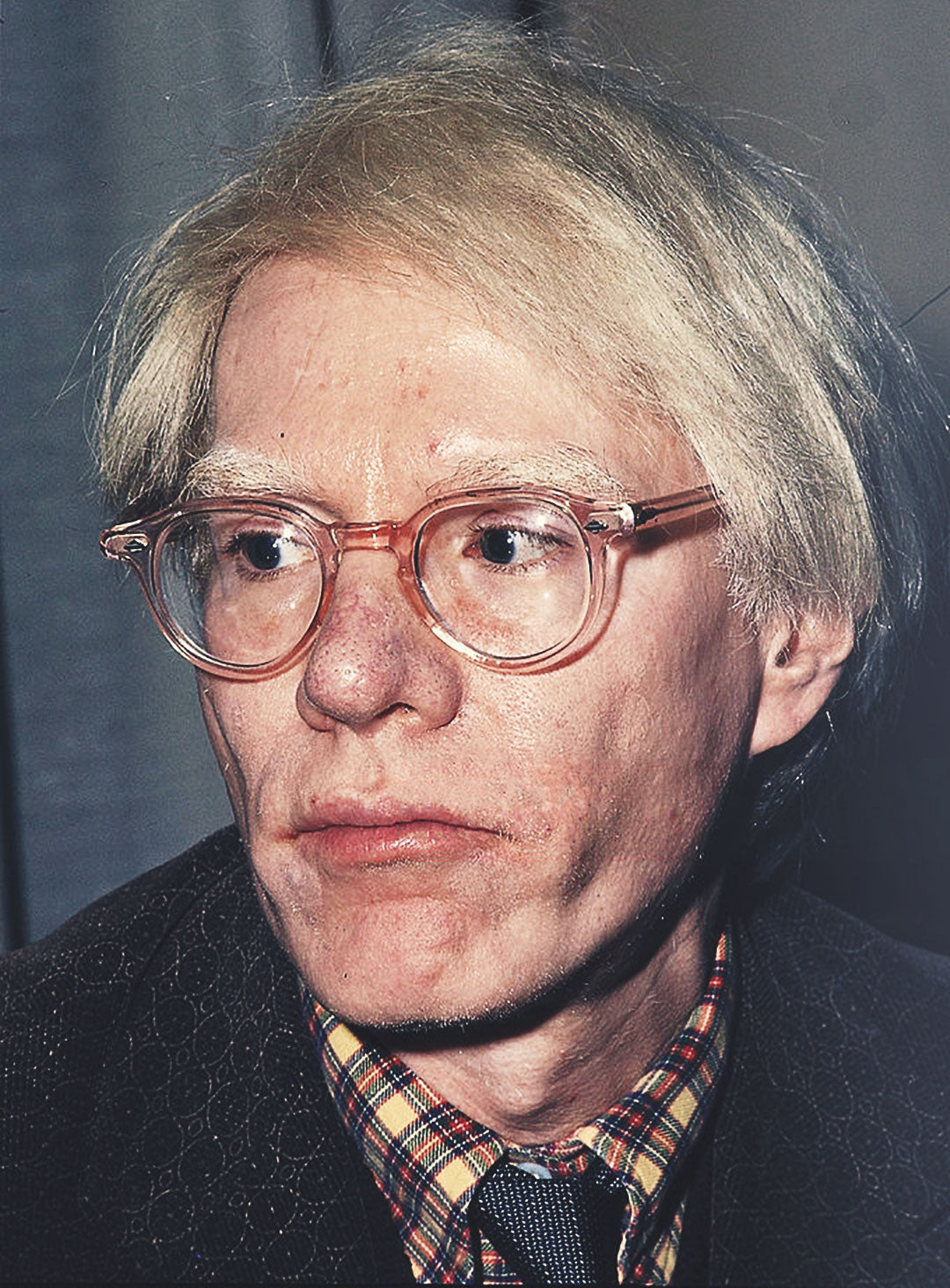
Despite his otherwise formal dress sense, Warhol’s clear glasses juxtaposed his dark suits and black leather jackets he so often wore.
Interestingly, the transparent acetate exposed the metal hardware within. The hinges, rivets and wire cores were all externally visible which remains as a fashionable look, even today.
Looking back to the launch of the iMac G3 in 1998, the design team at Apple Inc opted for a similarly clear-plastic exterior at the rear of the monitor to expose all of the wiring and circuitry. A clever use of design which allows you to appreciate the intricacy and technicality of the product.
If you’re a keen eyewear enthusiast, clear or translucent acetate is a great way of appreciating the construction of your spectacle frame.


You’ll notice that most of Warhol’s glasses were relatively round in their shape. This style suited his gaunt facial structure, complimenting his defined cheekbones and mildly skeletal appearance.
Charmingly, many of his spectacles featured a traditional keyhole-bridge, a classic detail which was extremely common in full acetate frames during the 1950's and 1960's.
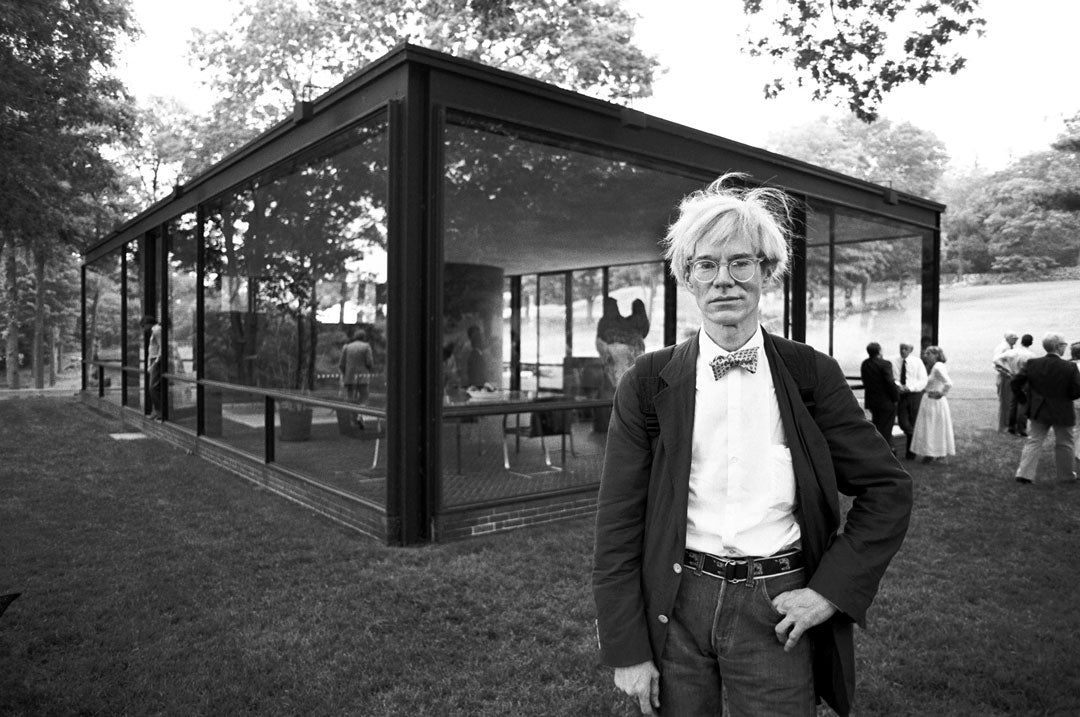
Andy Warhol visiting Phillip Johnson's "Glass House" in New Canaan, Connecticut, USA, Circa 1964. Warhol was invited by the famous architect as part of his birthday celebrations. | Image credit: David McCabe

Andy Warhol (left) kissing famous architect Philip Johnson (right) on the cheek. Andy was close-friends with Johnson's partner David Whitney, which is presumably how these two icons became acquainted | Image credit: artnet.com
Lightly tinted lenses
Warhol like to pose in similarly thick, clear frame sunglasses.
In the images below, you can see his preference for lightly tinted lenses, presumably so he could continue to wear them, both in and outside. A familiar trait modelled by film stars and celebrities in today’s contemporary culture - Robert Downey Jr and Johnny Depp to name a few.
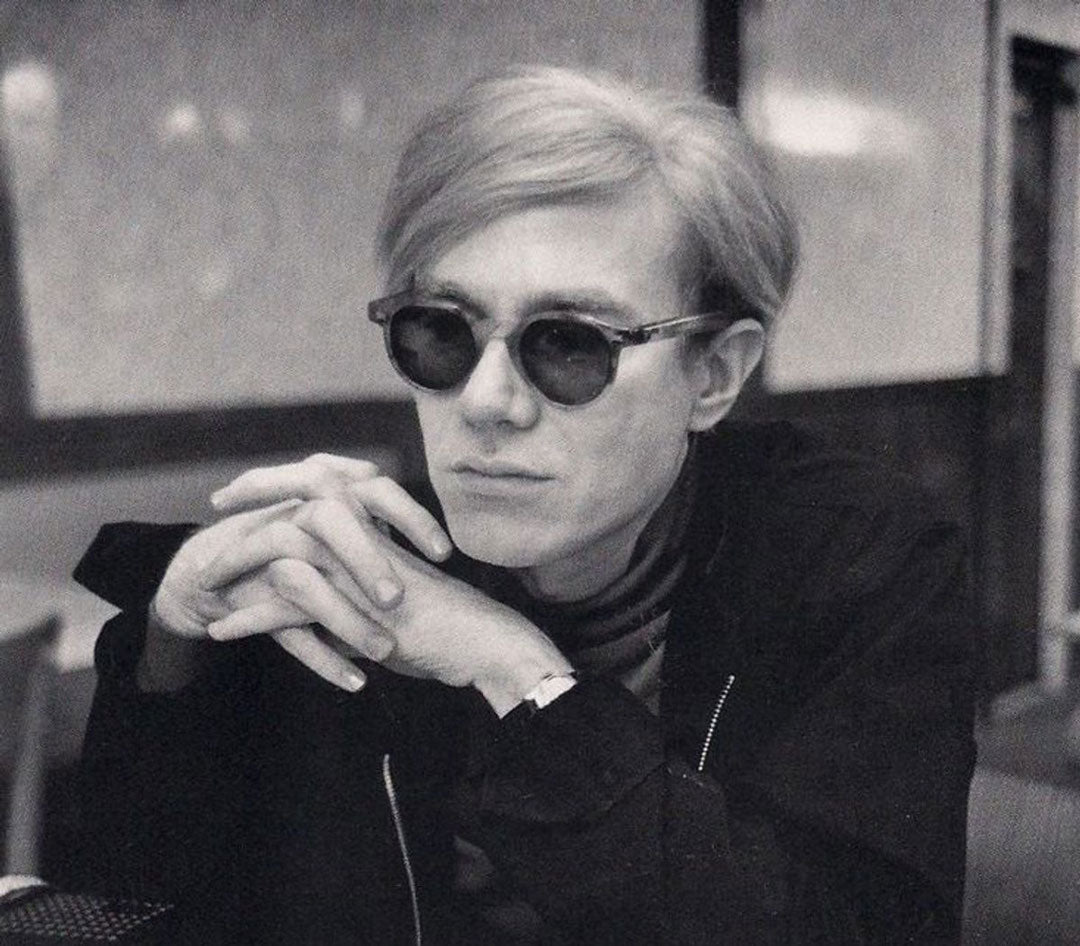
Like his spectacles, Warhol's sunglasses were full-rim and made from thick cellulose acetate. In this images, his frame is a patterned havana and featured a traditional keyhole bridge.
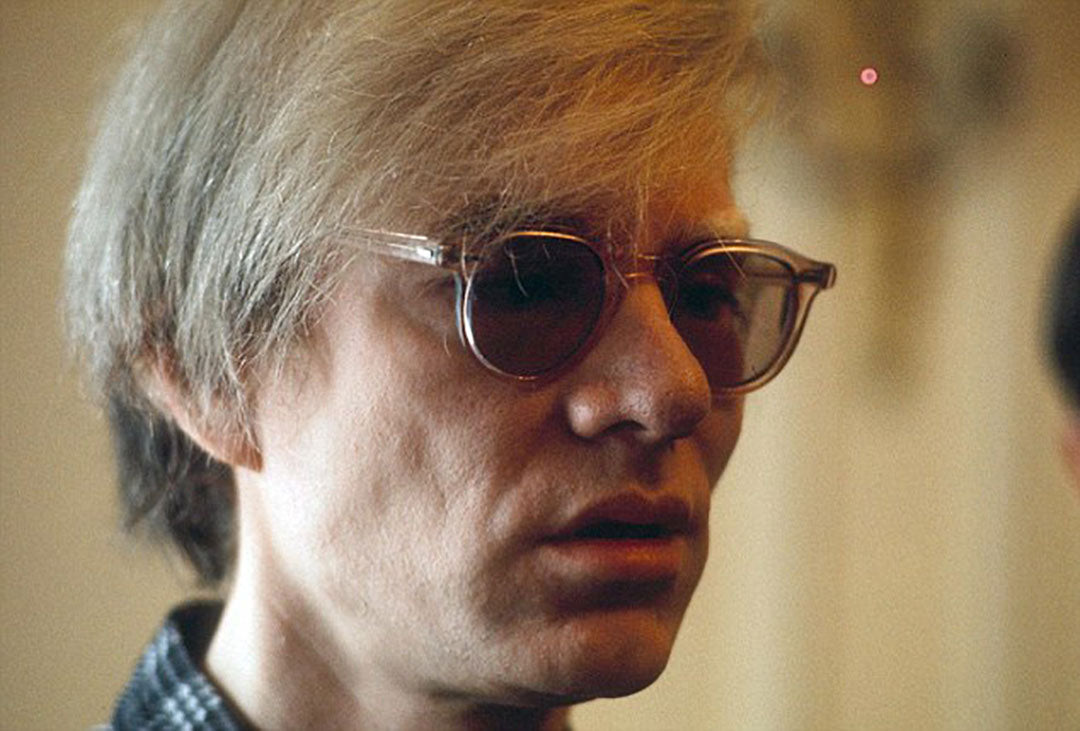
A rare colour photograph of Andy Warhol wearing a pair of crystal clear sunglasses. This was clearly one of his favourite styles as he tended to wear this transparent acetate for his eyeglass frame too.

In his ‘Factory’ studio, Warhol surrounded himself with a network of creative contemporaries. There, he regularly threw parties and gatherings throughout the height of his fame during the 60’s and 70’s.
Reputably, he was a gregarious man and rubbed shoulders with up and coming artists, musicians, drag queens, celebrities and wealthy socialites. This social circle was the “it crowd” of the day which famously became known “Warhols Supertars.”
Amongst his many friends and acquaintances was none other than British artist; David Hockney. Another icon of excellent eyewear and ambassador for the British strain of pop art.
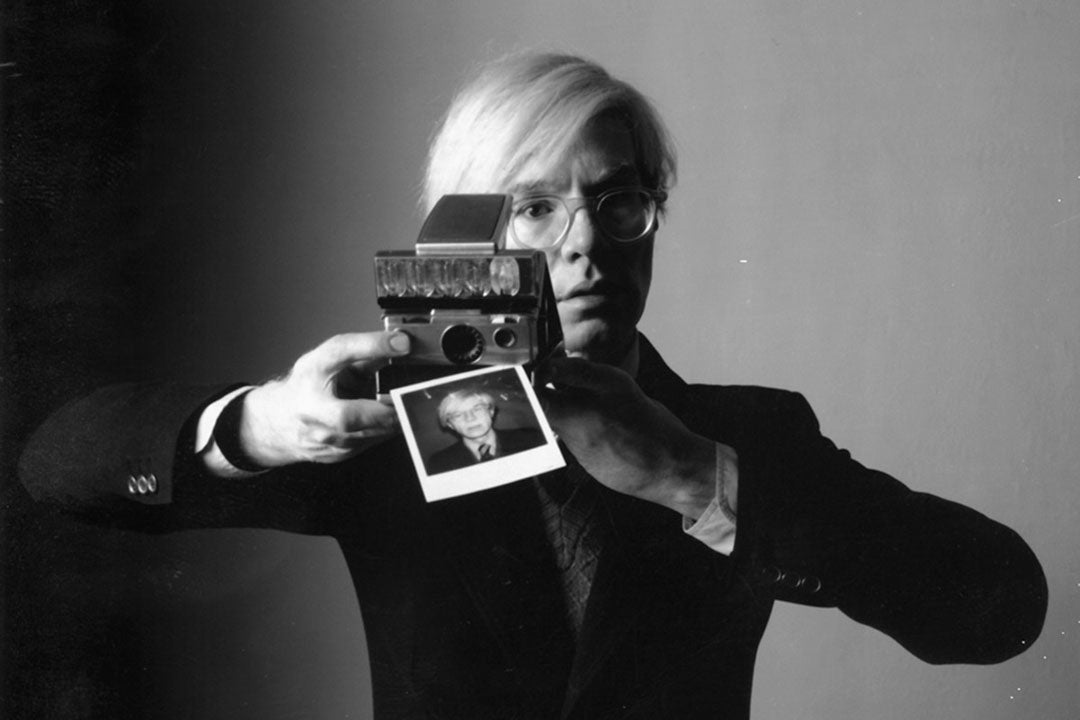
In February 1987, Andy Warhol passed away due to post-operative issues from a routine gallbladder surgery. His death was unexpected and shook his family and of course his adoring art fans.
To this day, his many works remain as artistic relics having been so prolifically widespread by his fondness for silkscreen printing and his avantgarde approach. He was an icon of 20th century American art and an ambassador of transparent eyewear.
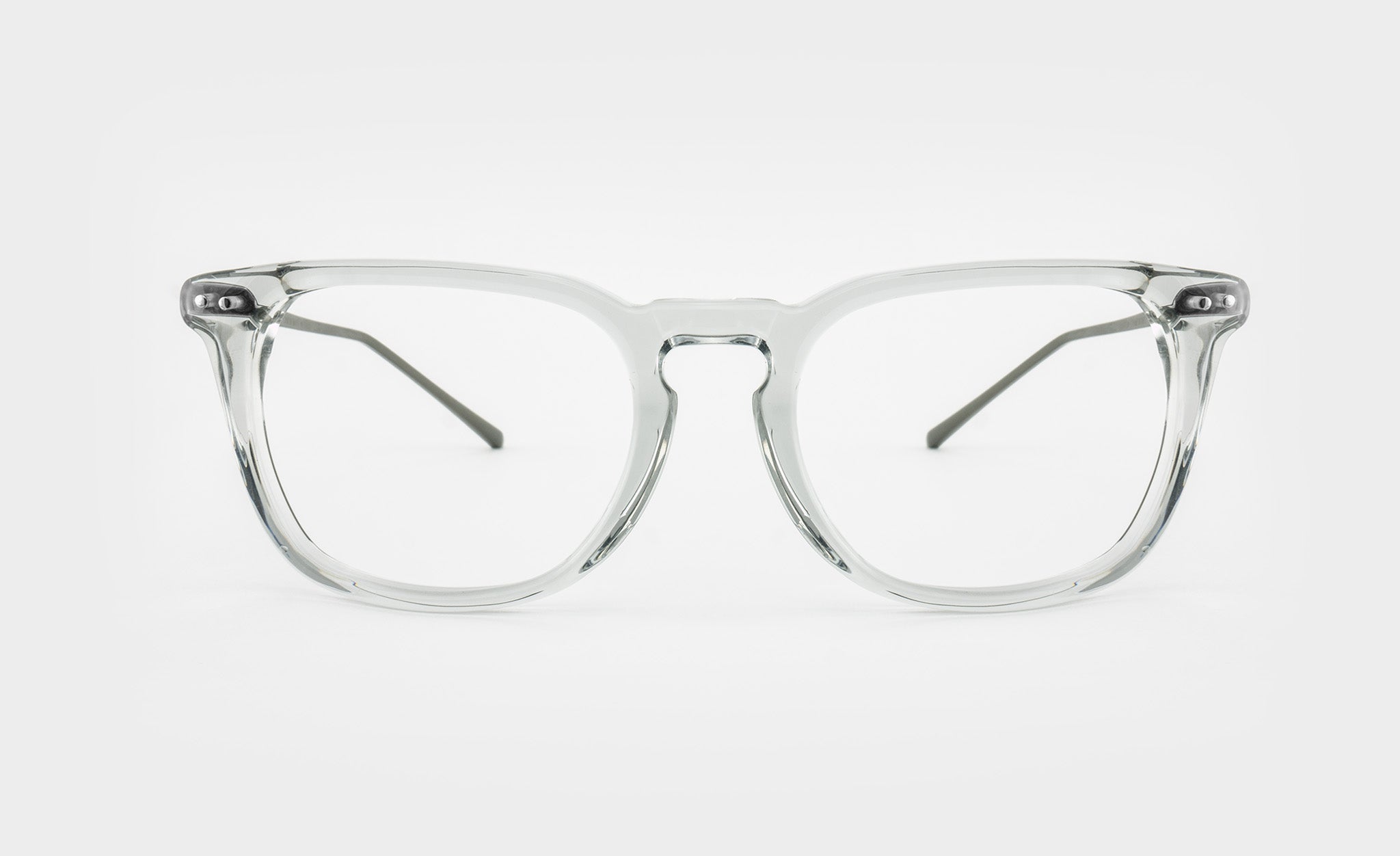
Hopefully you found this article helpful. Please check out our other eyewear icons. Thanks for stopping by.